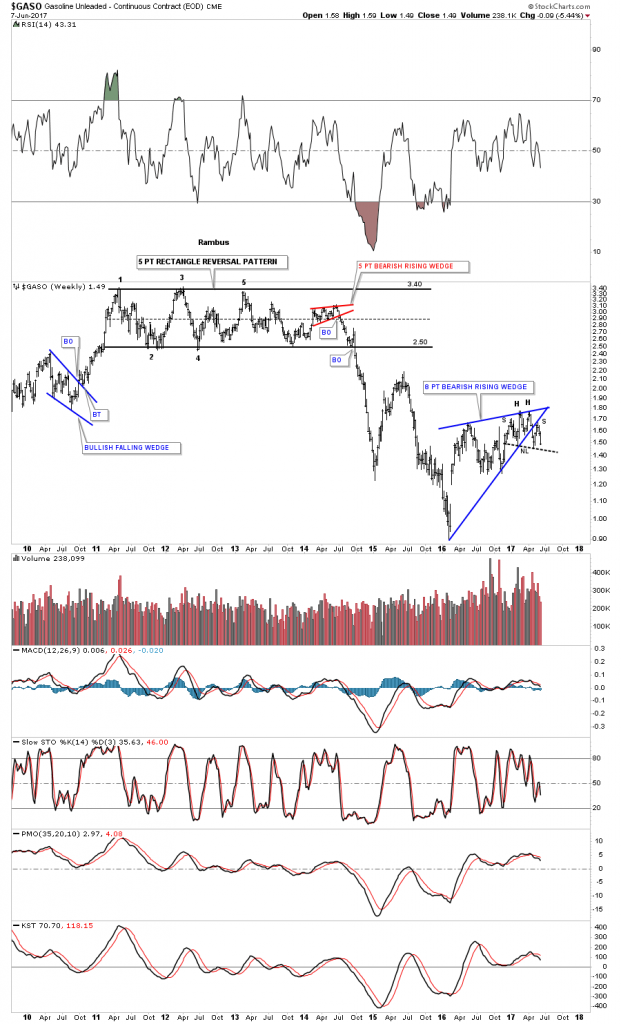There is something happening in the commodities complex that has been going on for a while now that needs to be addressed now. A subtle change actually started earlier this year and has been gaining momentum especially in the energy sector. I know for a lot of readers, with the weak US dollar, it's easy to think, “how could commodities be declining,” since this goes against everything you've learned about how the markets are supposed to work.
If the markets always behaved the way everyone thinks they should, there would be no markets, because everyone can’t be right. That’s the nature of the beast we’re trying to tame.
In this post, I'd like to show some bearish rising wedges that have formed all over the place in the commodities complex. Many of the rising wedges took over a year to build out. That sets up a healthy decline. The bigger the pattern the bigger the move.
This first chart is the ratio combo chart using the iShares TIPS Bond ETF (NYSE:TIP) versus the iShares 20+ Year Treasury Bond Fund (NASDAQ:TLT) to gauge if we are experiencing inflation or deflation. Earlier this year the ratio between TIP:TLT, in black, formed a small topping pattern just below the black dashed trendline, then had a quick backtest, and is now starting to gain momentum to the downside.
When the ratio in black is falling it shows deflation. Both the CRB index, along with the VanEck Vectors Gold Miners ETF (NYSE:GDX) are still in a downtrend with the CRB index weaker than the GDX, as show by the 30 week ema.
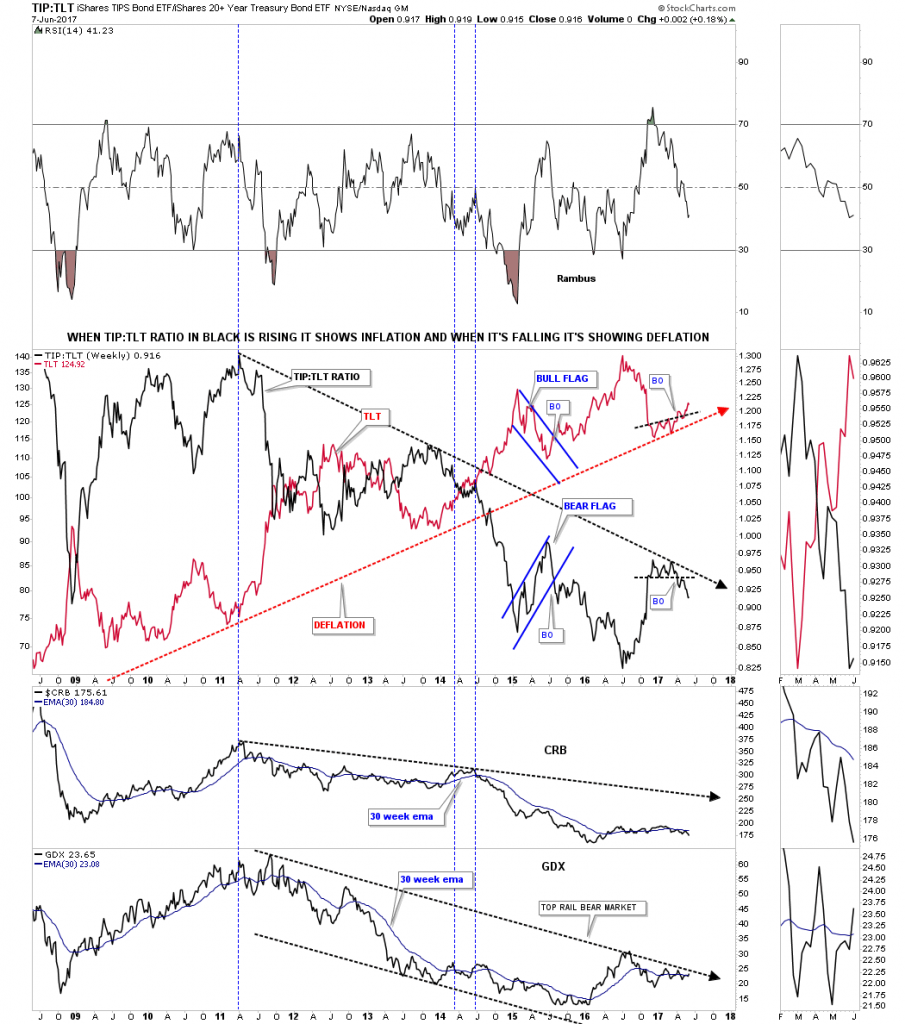
Next let's look at some different commodity indexes to see what they may be telling us. This first commodities index we’ll look at is the old CRB index.
This bearish rising wedge began to develop way back in early 2016 with the 4th reversal point taking place a year later at the top of the rising wedge. As you can see, the 4th reversal point was a H&S top reversal pattern. The breakout came in March with no backtest. There was a small blue bearish rising wedge which formed in the middle of 2015 which was part of that huge impulse leg down.
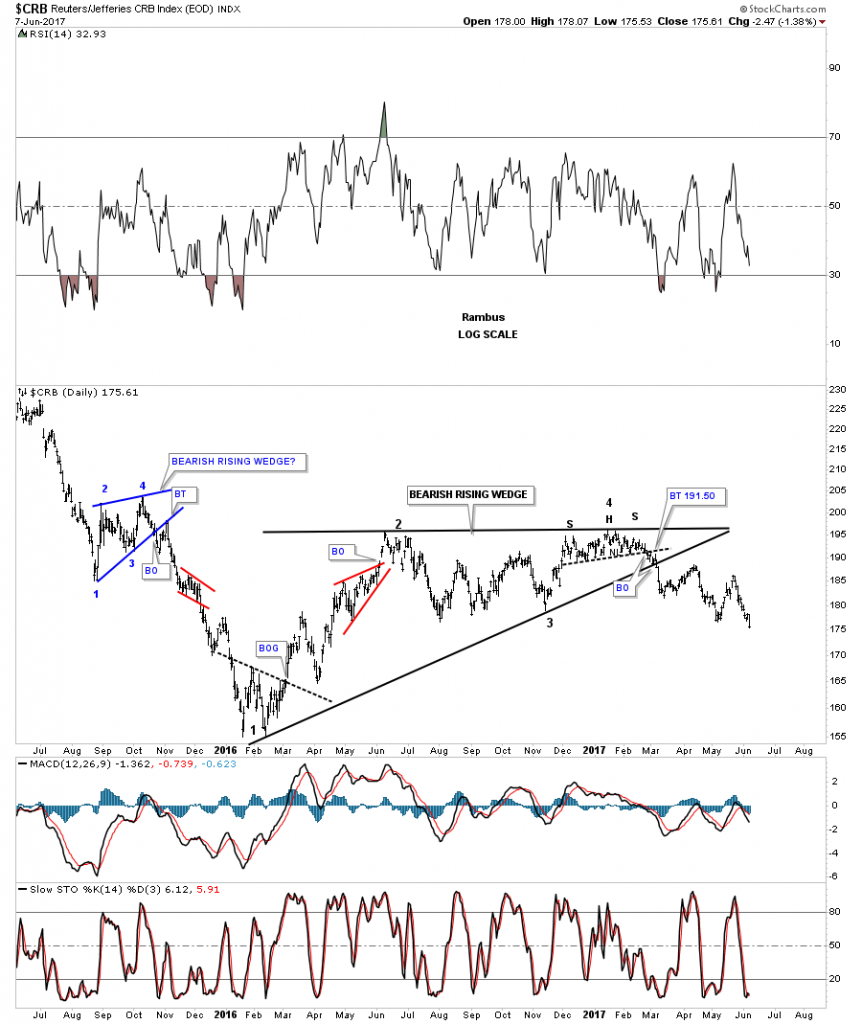
This next chart for the CRB index is one I’ve used for many years. It shows a lot of nice Chartology.
The CRB index is a good producer of chart patterns and measured moves as shown by the different colored arrows. Note how every important high is lower than the previous high going back to the top in 2008. Our bearish rising wedge doesn’t look so big on this long term chart.

This last chart for the CRB shows the 75-year history of the index. During the 2015 crash, the price action punched through the upper brown shaded support and resistance zone before reversing back up. It looks like the CRB index is either going to put in a double bottom or make a new low. That hasn’t been seen since the early 1970s.

The PowerShares DB Commodity Tracking Fund (NYSE:DBC) looks a lot like the CRB, but it trades with a lot more volume.

This long-term weekly chart shows a 5 point triangle reversal pattern which started the infamous crash into the January 2016 low which is the first reversal point in the blue bearish rising wedge. The blue arrows measures the price objective using the expanding triangle as the halfway pattern.

The S&P GSCI Commodity Index (GNX) shows a similar bearish rising wedge.
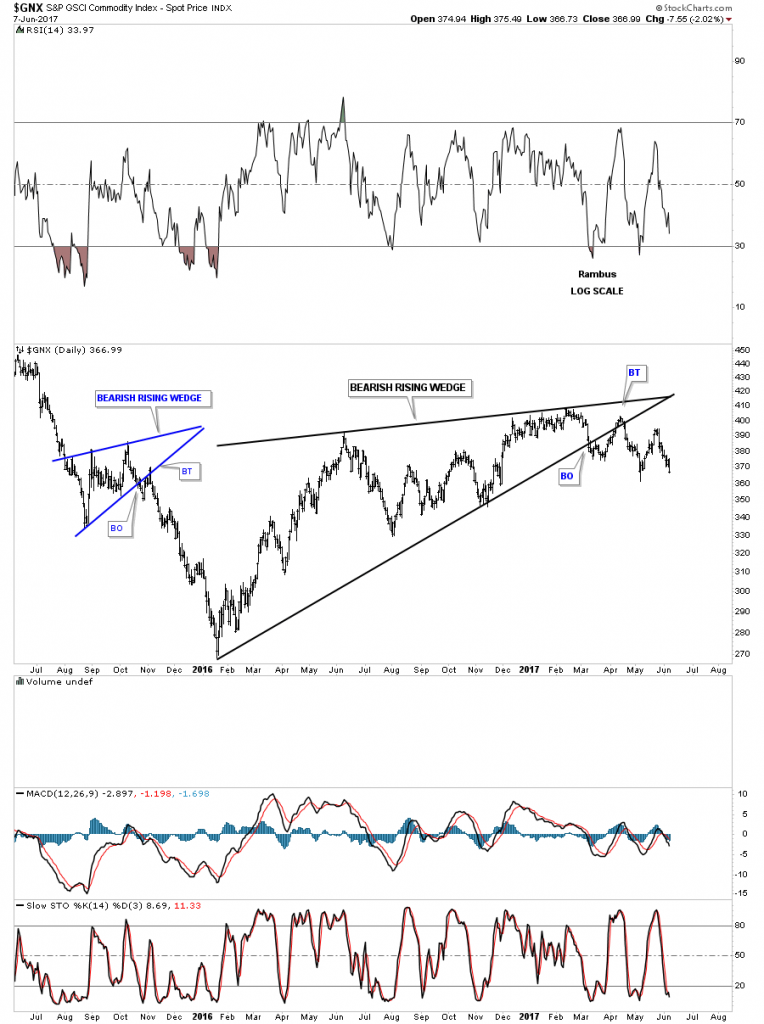
The price objective of a rising wedge is down to the first reversal point at a minimum. This monthly chart for the GNX shows a very large 10-year falling wedge. The bottom rail of that 10-year falling wedge would mark a great price objective to maybe complete the bear market.

This next chart is the iShares North American Natural Resources ETF (NYSE:IGE), which is set up differently than the commodities indexes discussed above. IGE built out a 7 point bearish rising flag, with the breakout taking place earlier this year.

The S&P GSCI Industrial Metals Index (GYX), below, built out an unbalanced H&S top with the backtest looking like it's complete. A move down to the brown shaded support and resistance zone at the bottom of the chart would be a good place to look for an important low.
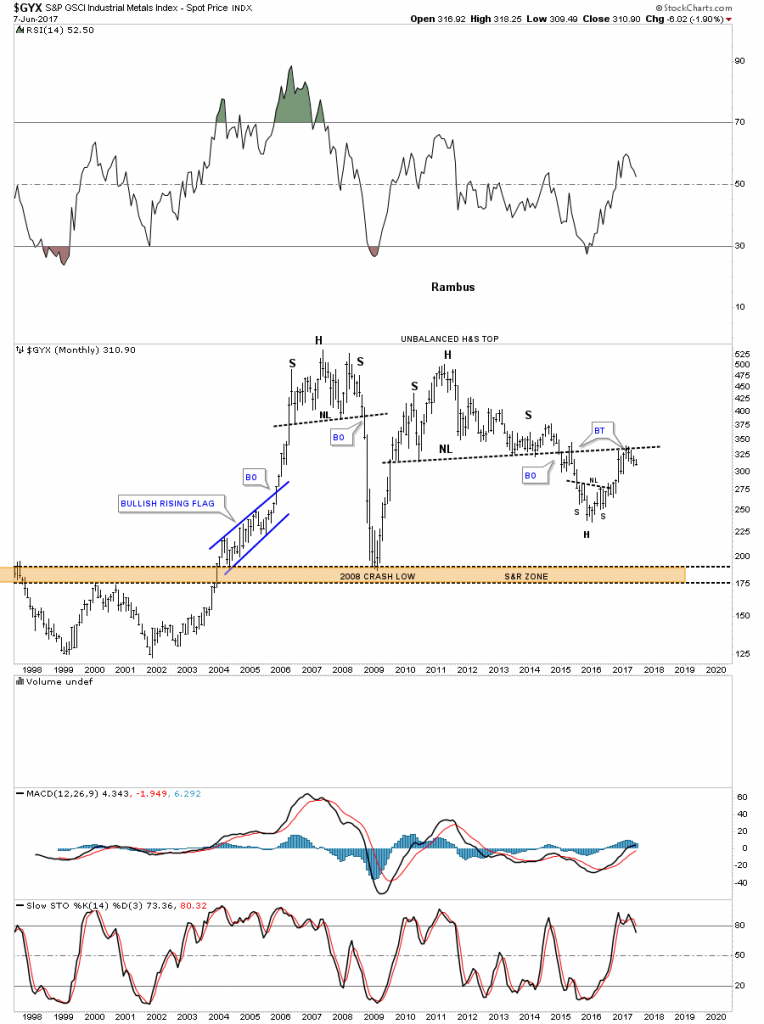
Now I'd like to get into the meat and potatoes of this post and look at the energy sector from several different angles. First let's look at WTI Crude which is showing two different rising wedges. This first chart is a daily line chart which shows the first reversal point starting at the first reaction high. The backtest was a little sloppy but held.
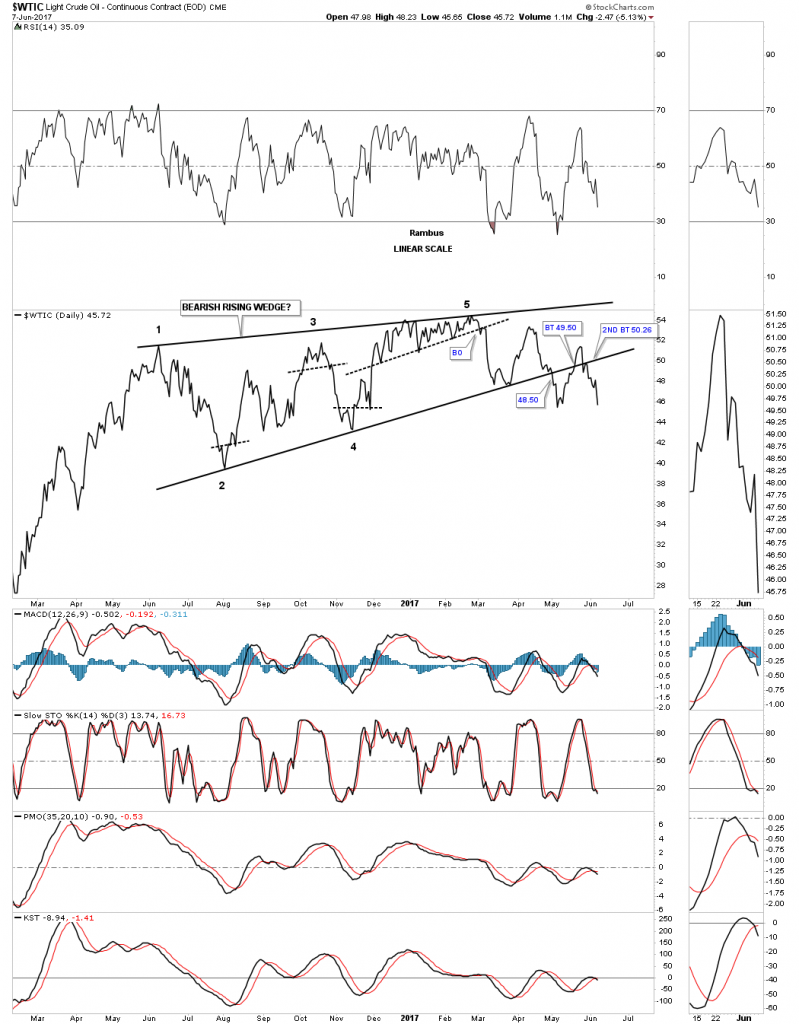
This is what it looks like on the weekly bar chart:

A while back I showed this weekly chart for the WTIC. You can see how the pattern was morphing into a bigger bearish rising wedge as shown by the red circles. Even without the red circles there are still 4 reversal points with a clean breakout and backtest.

The 10-year daily chart for oil shows how the rising wedge fits into the big picture.
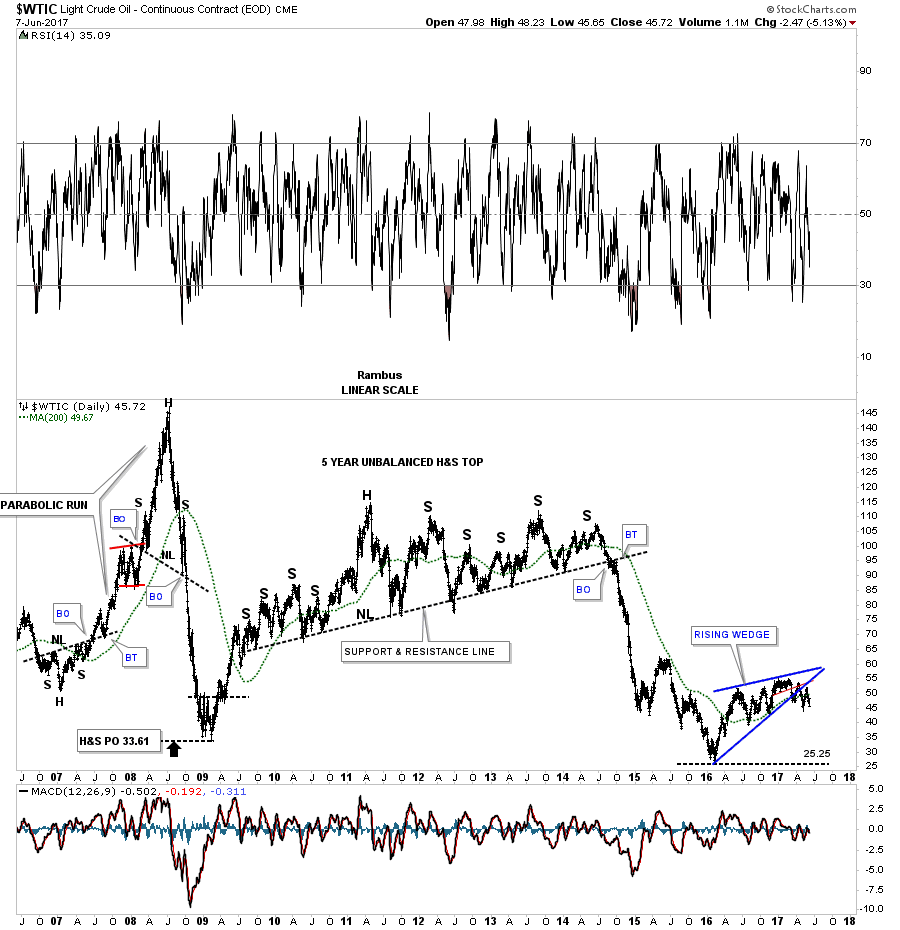
This last chart for WTIC is a 35-year quarterly chart which really puts the bearish rising wedge into perspective. At a minimum the blue rising wedge should reach the previous low. From there its anyone’s guess.

Now, let's turn our attention to natural gas which built out a classic H&S top with the left shoulder and head forming inside the bearish rising wedge and the right shoulder forming as the backtest to the bottom rail of the rising wedge, with the height of the left and right shoulders being equal. This is the same set-up I was looking for on gold, but it never materialized.

This long-term weekly chart for natural gas shows how the combo bearish rising wedge and H&S top look in the big picture. As you can see natural gas likes to build out H&S reversal patterns that are generally pretty symmetrical.
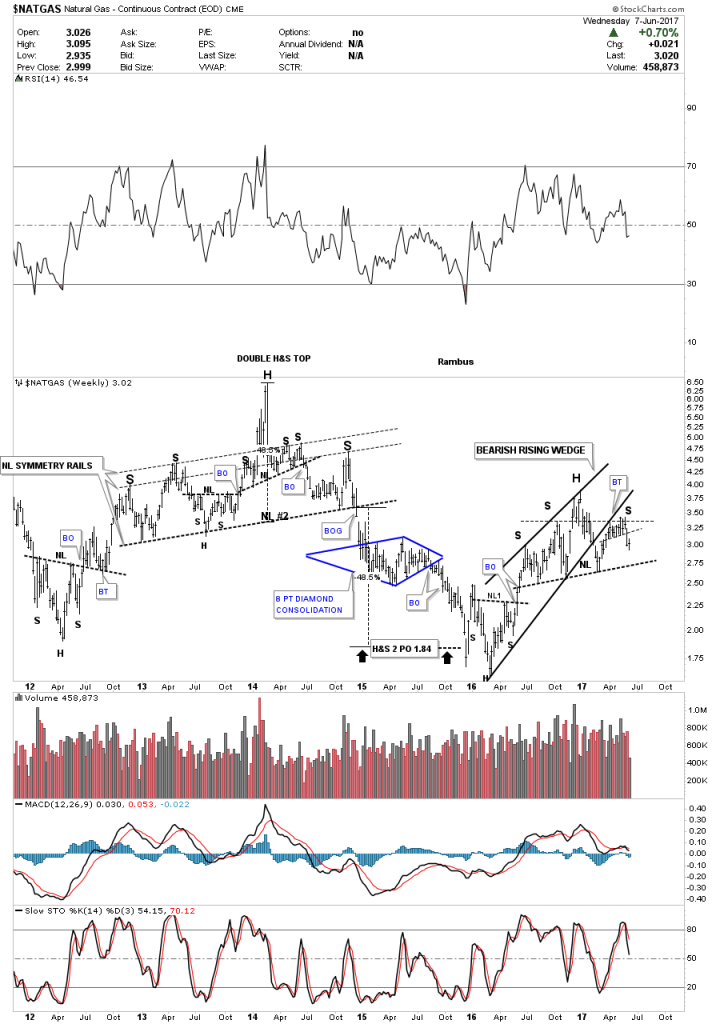
Below is the short-term daily chart which shows the H&S top in more detail.
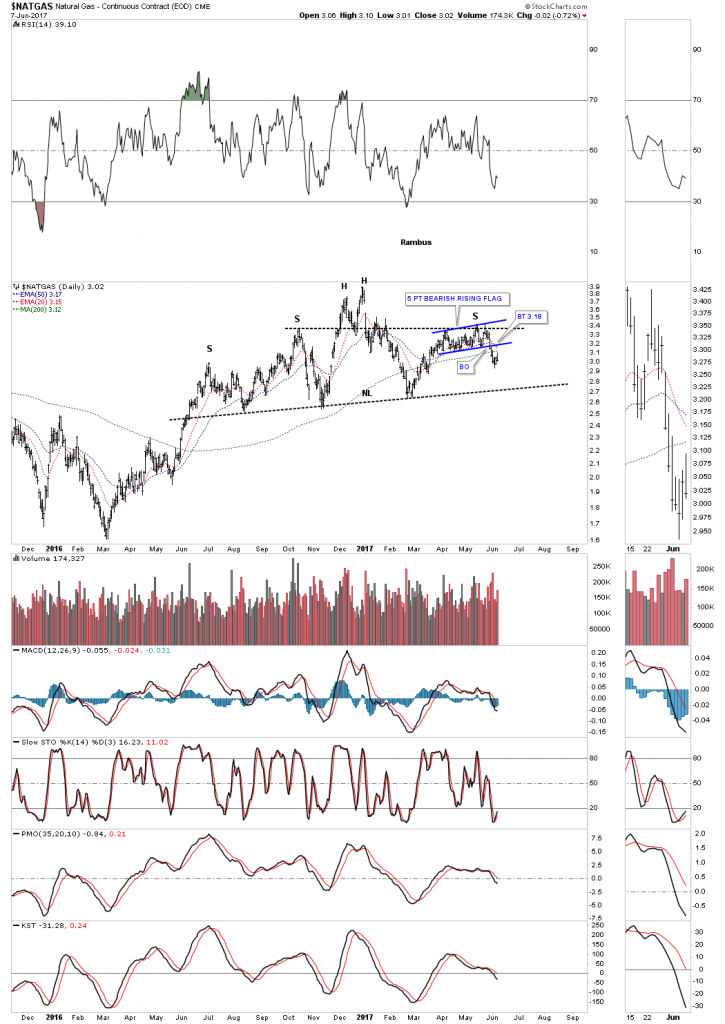
This last chart for natural gas is a 30-year quarterly chart which shows the complete history. I’ll let you use your own imagination on this chart.

When we first opened up our doors at Rambus Chartology, I used to post this chart as the Late Friday Night Chart. Note the 5 point rectangle reversal pattern at the top of the chart.
Our first clue that the rectangle was going to break down was the small red 5 point bearish rising wedge. Note the touch of the bottom rail at 2.50, the little pop telling us the bottom rail was still hot, and then the breakout to the downside.
I still have many more chart to show, but I want to get this post up. I’ll save the rest of the charts for a part 2 later this week. It all makes sense when you see the big picture unfolding before your very eyes.
